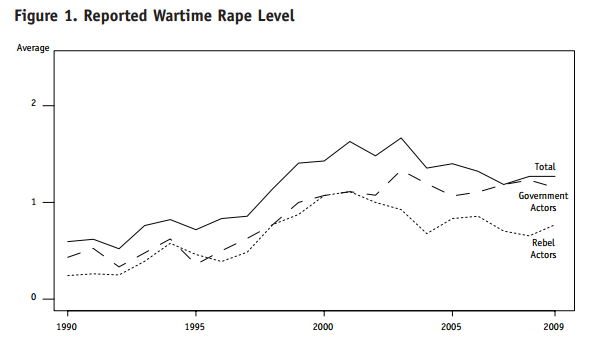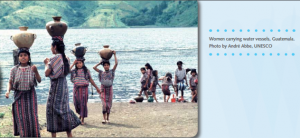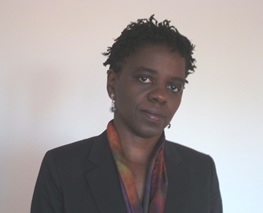Research question: How can a revised intersectional framework inform future solutions (legislative, educational, cultural) to poverty, prostitution, human trafficking and reproductive health issues, while also considering the nuanced contextual factors that influence how to best implement such solutions in different local communities across the globe? And more importantly, what are the main tenets of this framework?
When examined superficially from privileged perspectives with little exposure to or no direct experience with structural violence, issues of poverty, prostitution, human trafficking and their interdependencies may seem to be exclusive to the most impoverished parts of developing nations, such as Saki in Nigeria, which Olubukola Adesina refers to as a haven for child traffickers (1). Similarly, Jacquelyn Monroe shows that the causal relationships between poverty, sex work and low reproductive health is evidenced by the disproportionate prevalence of street prostitution in poor, African American communities in the United States (2). The US legal system remains flagrantly racist, classist and sexist, and its treatment of sex workers is no exception, with female workers receiving much harsher penalties for their involvement in the industry than the male clients and even the pimps. Hence, it is important to remain critical of current legal responses, both local and global, to these problems by gearing discourse surrounding them towards an intersectional analysis of how women and children find themselves working in such inhumane and traumatic conditions.
Future solutions and harm reduction strategies will need to be cohesive, enforceable and implemented on an institutional level, particularly in education where the youth should be encouraged to question outdated perceptions of poverty as a choice and relinquish entrenched cultural values that standardise the monogamous, heterosexual two-parent family while scorning any arrangements that deviate from this. However, structural inequities, insufficiency of data, widespread pathologisation of sex workers and LGBTQIA+ people, reinforced by largely heteronormative sexual education curricula (as shown in the Gowen & Winges-Yanez (3), and Elia & Eliason (4) studies), are but few of the obstacles that will thwart the transition to an ethos that is more accepting and inclusive of those who are systematically oppressed by the kyriarchy and hence forced into substandard living conditions and diminished mental health.
In Women in Prostitution: The Result Of Poverty and the Brunt of Inequity, Monroe substantiates claims that financial motives and poverty are the main reasons why women resort to street prostitution, which she identifies as a three prong structural problem – that is, a consequence of sexism, classism and racism. As such, the culprit is implicitly white supremacist capitalist patriarchy and accordingly, an Africana womanist perspective is better equipped to disentangle the causes of the problem and bring about appropriate reformative action than those of Marxist, socialist or radical feminists, none of which sufficiently acknowledge the preeminence of racism in their analyses of street prostitution. Essentially, Monroe contends that while these different variations of feminism generally agree that the high rates of street prostitution in certain communities in the United States can be attributed to systemic oppression, their disagreement regarding which factors weigh heaviest in this association render a unified solution that is universally agreed upon unattainable at this point in time.
In addition, she condemns the historically inequitable prostitution laws in the United States, which up until 1974 punished female sex workers, while allowing male prostitutes to engage in their work without consequences. This was because most states definition of “prostitute” was inherently female. For example, in 1974, the state of Indiana’s statute of prostitution read: “Prostitution is the practice by a female of indiscriminate sexual intercourse with males for compensation.” However, even today, prostitution laws are selectively enforced and tend to give the customer (typically privileged and male) the benefit of the doubt. In the U.S., “Johns” (i.e. male customers of prostitutes) are primarily white, married men who are employed in white collar jobs or skilled trades and usually reside in suburban communities, whereas the majority of street prostitutes (the most vulnerable and lowest ranked member of the sex trade industry) are “female, African American, of an immigrant status, poor, and/or a single parent.” A 1999 study actually showed that in 1993, 69% of prostitutes arrested for solicitation were convicted, while only 9% of arrested customers were. As if this statistic alone didn’t reveal how unfairly the American judicial system treats female sex workers, in 1995, weekend “John Schools” were introduced in San Francisco, which offer single day, psychoeducational courses to Johns in lieu of going to trial, granting them additional special consideration. These schools continue to operate across the United States today, as well as in Canada, South Korea and the United Kingdom (5).
Like prostitution, human trafficking is an industry that both commodifies human beings and exploits women, people of colour and underprivileged groups of lower socioeconomic status. Therefore, it too can be classified as a three prong structural problem best suited to an intersectional analysis. In Modern day slavery: poverty and child trafficking in Nigeria, Adesina presents a range of evidence from existing sources and primary data from open-ended interviews, focus group discussions and questionnaires, in her examination of the “nexus between poverty and child trafficking internally in Nigeria.” Before delving into theoretical considerations on poverty and human trafficking, existing inter-/national legal frameworks on child trafficking and conclusions from her own research, she defines the contentious terms, child trafficking and poverty, which recur throughout the paper.
Child trafficking is defined as “the business of taking children away from their homes, transporting them elsewhere, to be put to use by others, usually to make money.” As one of the main purposes of the study is to show the link between poverty and susceptibility to being trafficked, she then defines poverty, acknowledging that it is a complex, multidimensional phenomenon with no universal definition but can be simplified as “the lack of necessities.” In a similar vein to how Monroe outlines various feminist perspectives on the issue of prostitution before firmly favouring one of them, Adesina differentiates between different theories that attempt to explain the reasons for poverty, namely those that attribute it to individual circumstances, to systemic and geographic circumstances and those that interpret it as cyclical, dependent on both individual and systemic factors. She arrives at what she calls restricted opportunity theories, which blame poverty on insufficient access to economic opportunities. While there are legal frameworks in place to curtail the proliferation of human trafficking in Nigeria, such as the National Agency for Prohibition of Traffic in Persons and Other Related Matter (NAPTIP), and Nigerian NGOs, such as Women Trafficking and Child Labour Eradication Foundation (WOTCLEF), working in tandem with both the Nigerian government and international organisations, the study reveals there has been an increase in internal trafficking of women and children within Nigeria in recent years, particularly through, and in/out of Saki. This failure of law enforcement to mitigate child trafficking is traceable to ineffective legal frameworks, weak institutional mechanisms, unavailability of pertinent data, public ignorance of the problem, rising unemployment and too much focus on combating external trafficking, in and out of the country.
However, neither papers refer to the unique experiences of LGBTQIA+-identifying people who find themselves working in the sex trade or being trafficked, and so both of their policy recommendations fall short of full inclusivity. In a CBC news article titled Transgender and unemployed: Businesses shut doors to trans workers (6), David Burke draws attention to the phenomenon of transgender people struggling to find work or being fired from their job post- or mid-transition. This blatant discrimination by employers leads many trans people to find work in the sex industry.
This omission of a queer reading of said issues is exactly the focus of Discourses of Exclusion: Sexuality Education’s Silencing of Sexual Others, with regards to hetero-/cis-normativity of U.S.-based and international models of sexuality education. Elia and Eliason recount the history of sex education in the United States, which was introduced as a means of both hindering the spread of venereal diseases and to encourage certain sexual morals among the youth, which were exclusively informed by a heterocentric, marital and primarily sex-negative framework. A summarised continuum of sexuality education models in the U.S. is given, identifying five key paradigm shifts that characterise this history:
- No sexuality education
- Abstinence-only-until-marriage sexuality education
- Abstinence-based sexuality education
- Comprehensive sexuality education
- Anti-oppressive, inclusive sexuality education
All but number 5 are exclusionary to LGBTQ children to some extent, and the authors offer a comprehensive list of ten principles that ought to be incorporated into sexuality education in order to achieve the ideal anti-oppressive, inclusive framework. These principles recommend the following: inclusion of anti-oppressive or social justice education, democracy and inclusivity of all students, attention to intersectionality of oppressions, making values transparent, a balanced approach that sees relevant concepts such as pleasure/danger and risk/protection as spectrums rather than dichotomies, promotion of health in the broadest sense, recognition of both resilience and risk factors regarding LGBTQ youth, as well as balancing developmental sequencing with teachable moments.
Elia and Eliason mention how there has been progress made in secondary school sexuality education, thanks to the promotion of social and sexual justice in schools by organisations such as GLSEN (Gay, Lesbian and Straight Education Network) and PFLAG. However, as suggested by the Gowen and Winges-Yanez study, which was undertaken in Oregon and involved discussions with 30 LGBTQIA+ identifying or questioning youth, aged 16 to 20, in five different focus groups, there is still a significant amount of progress to be made. Exclusion of LGBTQ individuals was reported to manifest in the form of both active and passive silencing, heterocentric sexual discourse and pathologising narratives of queer identities. In fact, in some ostensibly progressive, developed nations such as Australia, there is currently a trend of retrogression with regards to inclusion of LGBTQIA+ issues in sexuality education. The voluntary “Safe Schools” program in Australia, which commenced in 2010 and sought to challenge notions of heteronormativity and promote acceptance of LGBTQIA+-identifying students, was de-funded by the federal government of Australia in February of this year, as certain members of parliament considered the program to be indoctrinating children with queer gender theory and Marxist ideology without consent of their parents (7).
Amidst Australia’s debate around the legalisation of gay marriage and the suggested plebiscite regarding this debate, estimated to cost roughly $175 million, it could be argued that this kind of divestment is merely a political strategy aiming the retain conservative voters. Moreover, the recommendation that parental consent be required for students to participate in such programs runs contrary to its purpose; many LGBTQIA+ youth are afraid of “coming out” because of the imagined reactions of their parents. If these children aren’t provided with spaces in which they can feel safe to discuss these kinds of realisations, risk of mental health issues and even suicide is exacerbated greatly.
From the focus groups carried out in Oregon, several suggestions to increase inclusivity were offered and agreed upon by a majority of the participants. These suggestions included greater focus on LGBTQ issues and identities, increased access to LGBTQ resources, more emphasis on STI prevention, and more discussion about both relationships and anatomy. I believe that a sexuality education curriculum that combines elements taken from suggestions in both the Elia and Eliason, and Gowen and Winges-Yanez studies, if adopted internationally, would be effective in improving the school experience for LGBTQIA students and encouraging acceptance and understanding amongst their peers. Contrary to the beliefs of the current Australian government, I think that these principles should be incorporated into syllabi as early as kindergarten, as these are the formative years of a child’s life in which prejudiced views are bred.
While these two studies are focused on deconstructing the heteronormativity of sexuality education and recommending more inclusive alternatives, I found that they are both fundamentally deficient, in that neither of them broach the very topical issue of consent. Mutual consent is a prerequisite of any kind of sexual activity, regardless of the participants sexual orientation or gender identity. Disturbingly, a Canadian Women’s Foundation study recently found that 1 in 3 Canadians don’t actually know what sexual consent means (8). For example, few Canadians realise that consent is not only required between new partners but also married couples. These ideas, as well as those concerning retraction of consent, the difference between “yes” and not saying “no,” non-verbal cues and intoxication must be incorporated into a reformed framework of sexual education, otherwise the problem of sexual assault will continue to fall under the radar despite progress made with regards to LGBT issues.
I found that both studies concerning poverty and prostitution (i.e. those by Monroe and Adesina), as well as those about reproductive health (i.e. the Gowen/Winges-Yanez and Elia/Eliason studies) provide sound recommendations in their respective fields, but fall short in covering more nuanced facets of the problems they are dealing with. Monroe makes no mention of the correlation between being LGBTQIA+ and involvement in sex work while Adesina’s “restricted opportunity theories” seem to be oversimplify the intricate, multidimensional industry of human trafficking. Similarly Gowen, Winges-Yanez, Elia and Eliason don’t even broach the topic of consent in their evaluation of current sexuality education models. While implementation of their proposed solutions would be a major step forward for several different groups of marginalised people, a truly intersectional reading of these issues would be more encompassing and inclusive of a wider range of feminist considerations.
______________________________________________________________________
Bibliography
- Adesina, Olubukola S. 2014. “Modern Day Slavery: Poverty And Child Trafficking In Nigeria”. African Identities 12 (2): 165-179.
- Monroe, Jacquelyn. 2005. “Women In Street Prostitution: The Result Of Poverty And The Brunt Of Inequity”. Journal Of Poverty 9 (3): 69-88.
- Gowen, L. Kris and Nichole Winges-Yanez. 2013. “Lesbian, Gay, Bisexual, Transgender, Queer, And Questioning Youths’ Perspectives Of Inclusive School-Based Sexuality Education”. The Journal Of Sex Research 51 (7): 788-800.
- Elia, John P. and Mickey Eliason. 2010. “Discourses Of Exclusion: Sexuality Education’s Silencing Of Sexual Others”. Journal Of LGBT Youth 7 (1): 29-48.
- Cook, I. R. 2015. “Making links between sex work, gender and victimisation: The politics and pedagogies of John Schools”. Gender, Place and Culture 22 (6): 817-832.
- Burke, David. 2016. “Transgender And Unemployed: Businesses Shut Doors To Trans Workers”. CBC News. http://www.cbc.ca/news/canada/nova-scotia/transgender-unemployed-business-jobs-discrimination-1.3740571.
- Birmingham, Simon. 2016. Statement On Safe Schools Coalition. Adelaide: Liberal Party of Australia.
- “Only 1 In 3 Canadians Know What Sexual Consent Means”. 2016. canadianwomen.org. http://canadianwomen.org/press-consent.




